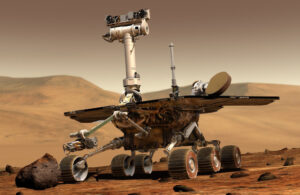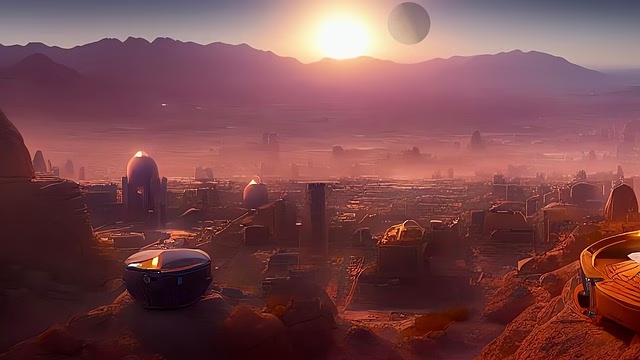Living on Mars: The Epic Journey to Conquer the Red Planet is an ambitious goal that presents numerous challenges. However, with the rapid advancements in space technology, this once-distant dream is slowly becoming a reality. In this article, we will explore the hurdles that need to be overcome and the unique considerations involved in making Mars a habitable destination for future explorers and settlers.
Surviving the Journey
The journey to Mars itself is a formidable task. The distance between Earth and Mars can vary from around 55 million kilometers at their closest approach to over 400 million kilometers at their farthest point. A one-way trip to Mars can take anywhere from six to nine months, depending on the launch window and the trajectories chosen.

During this extended period in space, astronauts face several risks, including exposure to cosmic radiation, microgravity-induced bone and muscle loss, and psychological challenges associated with prolonged isolation and confinement. Developing effective countermeasures to mitigate these risks is crucial for ensuring the well-being of future Mars explorers.
Creating a Habitable Environment
Once on Mars, establishing a livable environment presents an entirely different set of challenges. The Martian atmosphere is incredibly thin, with a surface pressure less than 1% of Earth’s, making it inhospitable for human respiration. Additionally, the average temperature on Mars is around -60°C (-76°F), far too cold for liquid water to exist on the surface.
To create a habitable environment, future colonies will need to develop advanced life support systems capable of providing breathable air, water, and a controlled, Earth-like atmosphere within enclosed habitats. Advanced life support systems must shield these habitats from harmful radiation and extreme temperature fluctuations to ensure the safety and comfort of the inhabitants.
Generating Resources
One of the most significant challenges of living on Mars is the production and management of resources. Since transporting supplies from Earth would be prohibitively expensive and logistically challenging, future colonists will need to rely on in-situ resource utilization (ISRU) – the practice of harvesting and processing locally available materials on Mars.

Water, a crucial resource for human survival, could potentially be extracted from the Martian soil or ice deposits. Additionally, the Martian regolith (surface material) contains various minerals and compounds that could be processed to produce construction materials, fuel, and other essential resources, reducing the reliance on Earth-based supplies.
Fostering Self-Sufficiency
Achieving self-sufficiency is a critical aspect of long-term survival on Mars. This involves developing sustainable food production systems, such as hydroponics or aeroponics, to grow crops in controlled environments. It also means establishing robust recycling and closed-loop systems to minimize waste and maximize the reuse of resources.
Furthermore, future colonists will need to develop the capability to manufacture and repair essential equipment and infrastructure on-site. Reducing their dependence on Earth-based resupply missions.
Technological Advancements
This has been seen by the likes of Space X led by Elon Musk – One of the Richest individuals on earth. He is really pushing it determined to make this dream a reality by 2030.
Realizing the dream of living on Mars will require significant technological advancements across various fields, including:
1. Propulsion Systems: More efficient and powerful propulsion systems are needed to reduce travel time and increase payload capacity for Mars missions.
2. Habitat Design: Advanced materials and construction techniques will be required to build sturdy, radiation-shielded habitats capable of withstanding the harsh Martian environment.
3. Life Support Systems: Highly efficient and reliable life support systems are essential for maintaining a breathable atmosphere, managing water and waste, and providing a comfortable living environment.
4. Robotics and Automation: Robotic systems and automation will play a crucial role in construction, resource extraction, and maintenance tasks, reducing the workload on human colonists.

Tesla is one of the companies creating self-driving cars and Robots to survive on Mars. READ MORE
5. Energy Production: Sustainable and reliable energy sources, such as solar panels or nuclear reactors, will be necessary to power the colony and support various operations.
6. Medical Technologies: Advanced medical technologies and procedures will be required to address potential health issues arising from prolonged exposure to the Martian environment and the challenges of long-term space travel.
While the challenges are daunting, the potential benefits of establishing a human presence on Mars are significant. A successful Martian colony could pave the way for further exploration of the solar system. Advance our understanding of planetary formation and evolution, and serve as a stepping stone for future interstellar travel.
As we continue to push the boundaries of human exploration, the dream of living on Mars is no longer confined to the realm of science fiction. With sustained effort, international collaboration, and technological breakthroughs, humanity may one day call the Red Planet home.
Frequently asked questions about living on Mars
1. Why is it so difficult to live on Mars?
Living on Mars presents major challenges due to its harsh environment. The thin atmosphere provides little protection from cosmic radiation and extreme temperatures. There is also a lack of liquid water and other resources necessary to sustain human life.
2. How could humans breathe on Mars?
Humans cannot directly breathe the extremely thin Martian atmosphere. Future Mars habitats would need to create Earth-like conditions inside enclosed spaces, with life support systems providing breathable air through processes like extracting oxygen from the Martian soil.
3. What kind of shelter would be needed on Mars?
Scientists would require sturdy habitats to shield inhabitants from radiation, micrometeorite impacts, and massive temperature swings on Mars. They could construct these habitats using materials like inflatable modules covered with regolith (Martian soil) or modules 3D printed from local materials.
4. How would food and water be sourced on Mars?
Engineers would need to design sturdy habitats to shield inhabitants from radiation, micrometeorite impacts, and massive temperature swings on Mars. They could potentially construct these habitats using materials like inflatable modules covered with regolith (Martian soil) or modules 3D printed from local materials. Long-term, in-situ resource utilization will be critical.
5. What are the biggest technological hurdles to overcome?
Key challenges include developing lighter and more efficient spacecraft for the journey, robust life support systems, radiation shielding, self-sustaining food/water production, in-situ manufacturing capabilities, and reliable power sources on Mars itself.
References:
1. NASA. “Mars Exploration Program.” https://science.nasa.gov/planetary-science/programs/mars-exploration/
2. Daga, A., Hendrix, J., & McGee, J. (2019). “Living on Mars: A Challenging Future.” Journal of Aerospace Technology and Management, 11, e3619.
3. Zubrin, R. (2011). “The Case for Mars: The Plan to Settle the Red Planet and Why We Must.” Free Press.
4. Musk, E. (2017). “Making Humans a Multi-Planetary Species.” New Space, 5(2), 46-61.
5. International Mars Exploration Working Group. (2019). “The Global Exploration Roadmap.”
6. Space X https://www.spacex.com/

